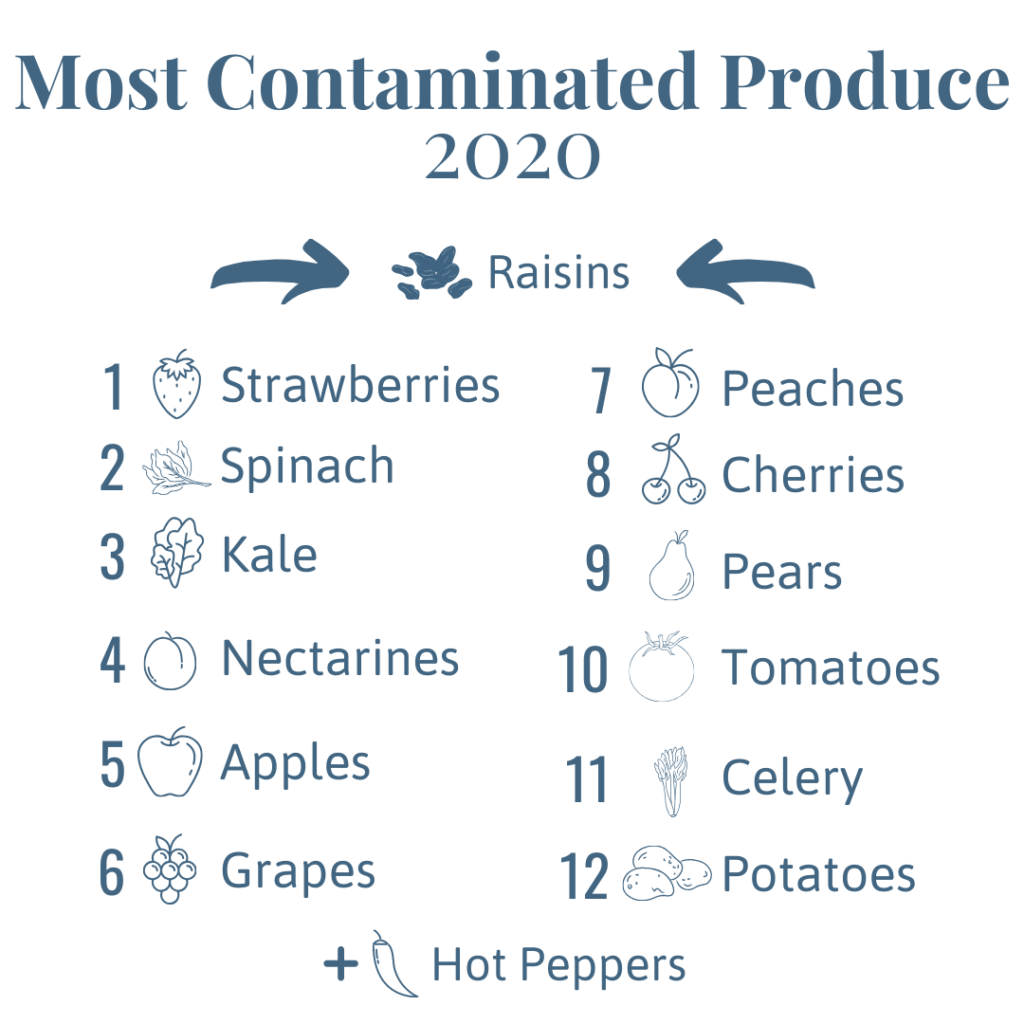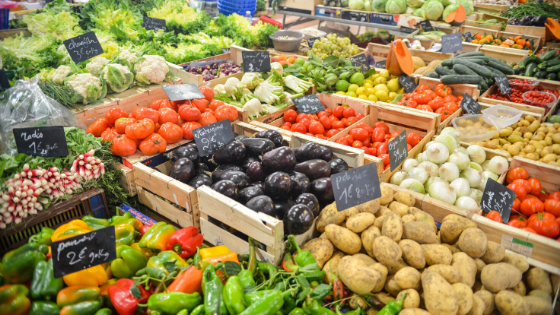The facts you need to know.
Since the COVID-19 outbreak in the United States, I consciously decided to change the topics of my blogs. I had several written but felt the need to keep things light and deliver actionable items to help you navigate these unique circumstances. Three weeks ago, the Environmental Working Group released their annual Pesticides in Produce report. I’ve been researching it and debating on what to do with this information ever since. This topic is heavy and may make you angry, but if you are trying to take control of your health, this is something that you need to know now.
Background
Nearly 70% of fresh produce sold in the U.S. contains potentially harmful pesticides, according to the Department of Agriculture. Since 1991, the USDA annually tests nearly 44,000 commodities for pesticide residues. Before testing fresh produce, each fruit or vegetable is processed in the same way that people tend to do at home. Items are peeled and/or rinsed under cold water and drained, then tested. Therefore, the results are a good indication of the consumers’ likely exposure to pesticides.
The Environmental Working Group analyzes these results and ranks produce based on the following measures:
- Percent of samples tested with detectable pesticides
- Percent of samples with two or more detectable pesticides
- Average number of pesticides found on a single sample
- Average amount of pesticides found, measured in parts per million
- Maximum number of pesticides found on a single sample
- Total number of pesticides found on the crop
Using these numbers, they publish the annual “Shopper’s Guide to Pesticides in Produce” along with the “Dirty Dozen” and “Clean Fifteen” lists.
2020 Results
This year, EWG warns the dirtiest produce commodity is not a fresh fruit or vegetable but a dried one. Raisins. If raisins were fresh produce, they would be ranked #1 on the Dirty Dozen list, because 99% of samples tested positive for at least 2 pesticides. On average, each sample was contaminated with more than 13 pesticides, and one sample had 26 pesticides. And as if that’s not bad enough, 78% of organic raisins were contaminated with 2 pesticides. Some organic samples had up to 12.
Other significant takeaways from this year’s results are:
- More than 90% of samples of strawberries, apples, cherries, spinach, nectarines, and kale tested positive for residues of two or more pesticides.
- Multiple samples of kale showed 18 different pesticides. The pesticide most frequently found on kale was DCPA, sold under the brand name Dacthal. The EPA classifies it as a possible human carcinogen. The European Union banned it in 2009.
- On average, kale and spinach samples had 1.1-1.8 times as much pesticide residue by weight than any other crop tested.
- Hot peppers did not rank among the top twelve, but because they tested positive for pesticides that are toxic to the brain, hot peppers were added on to the “Dirty Dozen Plus” list.
Here is a summary of the highest ranked for you to take a screenshot of if you’d like. You can click here to see the full list of EWG’s rankings.

Pesticides and Children
In 2012, the American Academy of Pediatrics issued an important report that said children have unique susceptibilities to pesticide residues’ potential toxicity. The AAP cited research that linked pesticide exposures in early life to pediatric cancers, decreased cognitive function, and behavior problems.
According to Zion Market Research, children under the age of 15 eat about 208 million pounds of raisins each year. Some of the potentially harmful pesticides that the USDA found on raisins are:
- Imidacloprid (on 84% of raisins) and acetamiprid (on 13%) are the bee-killing pesticides that also harm brain development.
- Bifenthrin (on 77%) and tebuconazole (on 62%) are both classified as a possible human carcinogen and damage developing nervous systems in animals. Tebuconazole is also linked to endocrine disruption and impaired reproductive development.
- Chlorpyrifos (on 5%) is damaging to the brain and is banned in the European Union.
How do I translate this to real life?
Wow, do I get angry when I review facts like these! I know this is a lot to take in. Like I’ve said before, the food system is broken. It’s a fact, and I am not one that can fight the system. However, I won’t bury my head in the sand either. I take in this information, and when buying produce I ask myself 2 questions:
#1 Is it on the “Dirty Dozen Plus” list? – If it is and organic is not available or is too expensive, I don’t buy it. Very black and white here. And this year, we won’t be buying raisins of any kind.
#2 How often do I eat the item? – If it is something that I eat often/everyday (greens and blueberries), I will only buy organic. Is there really that big of a difference between the food ranked #15 or #20 and #12? If I eat those foods often, my body still has to work overtime to detoxify. Also, I don’t order salads when eating out unless I know it’s organic.
So much is out of our control these days, but what you buy and what you put in your body is still your decision. As I shared on my “How I Operate” page of my website, I truly believe that we can bring about change from the ground up by educating ourselves, listening to our bodies, and spreading the message.
For that reason, if there is someone you know that could use this information, please share it with them. And then let me know in the comments if you typically buy organic, how you decide what to buy, and if this blog changed the way you approach this subject.
Love, Peace, & Clean Produce!

Thanks for this. Have it on my phone now. So distressing, but must-have info for everyone. 🙏🏼
You’re welcome 🥰
Good stuff.. the Raisin Bran will not be invited in our home anymore… and the blueberries and lettuce will organic! Thank you for encouraging one person at a time! Luv to you.
Thank you, Debra. 😘